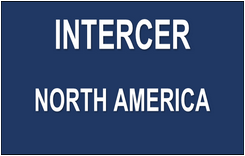ISO 50001
Energy management
ISO 50001 provides a framework of requirements for organizations to:
Develop a policy for more efficient use of energy
Fix targets and objectives to meet the policy
Use data to better understand and make decisions about energy use
Measure the results
Review how well the policy works, and
Continually improve energy management.
Certification is an independent verification of the effectiveness of a company's process management system. Certification offers repeated independent assessments by experienced experts and helps uncover issues and offer ideas for potential improvements.
Last but not least, an auditor can also be an instrument that helps to more easily promote certain changes in the management system for any type of process.
CONTEXT
One of the first steps of implementing an EnMS, is to gain an understanding of the “context” of the organization or, paraphrasing, the macro issues that affect and are affected by an organization.
For instance, this could be security of energy supply. As an organization is subject to a variety of influences, which can change, this can lead to risks in the form of potential threats and opportunities. Determining the risks that derive from this drives an organization to consider such changes or events, analyse their impacts and chances of an event occurring and then encouraging a planning or mitigation strategy.
PLANNING - LEGAL AND OTHER REQUIREMENTS
The assessment of whether an organization is complying with their energy legal framework. The concept of maintaining knowledge and understanding of its compliance status has built in risk assessment principles so that an organization can determine its compliance status and, per se, understand where it is not complying and therefore devise strategies to minimise the risk.
PLANNING - RISK AND OPPORTUNITIES
Those organizations that need further assistance in ensuring that their risk assessment process is comprehensive can look towards ISO 31000 Risk Management - Principles and guidelines. This provides generic guidelines although it is not intended to promote uniformity of risk management across organizations.
Of course, the design and implementation of risk management plans and frameworks will need to take into account the varying needs of a specific organization, its particular objectives, context, structure, operations, processes, functions, projects, products, services, or assets and specific practices employed
IMPROVEMENT - CONTINUAL IMPROVEMENT
A risk based philosophy means that an organization can be better prepared for the impacts of uncertainty e.g. stable power supply, which in turn means greater resilience. Moreover, risk- based thinking implicitly results in continual improvement, as an organization is always examining potential influences and changes.
Processed Based Thinking/Audit
Some organizations that implement an EnMS will look to integrate it with their Quality (QMS) or Environmental Management System (EMS). If this is the case, they will be familiar with “process based” thinking. However, if not, it might not be clear how the process approach is applicable to the EnMS requirements in ISO 50001.
The ISO 9001 requirements for a QMS are founded on seven quality management principles, and one of these is the “process approach”. It is explained fully in the introduction of ISO 9001, but as a paraphrased summation; a process approach is where more consistent results can be attained when consideration and management of activities are carried out as interrelated processes, which together, make up a system.
The process approach applies to an EnMS because a comprehensive appreciation of an organization’s energy use/consumption/equipment from its processes needs to be known.
CONTEXT
A comprehensive appreciation of an organization’s processes needs to be understood when considering the macro issues which interrelate between the organization and energy consumption.
ENERGY REVIEW
In order to determine a comprehensive assessment of the energy the current types and past and current energy use and consumption need to be analysed. This will draw out Significant Energy Uses (SEUs).
PERFORMANCE AND MONITORING
In order to determine energy performance, analysis of energy data derived from the EnMS needs to be evaluated.
SUPPORT/COMPETENCE
In order to manage energy use/consumption, a person needs to be competent. When determining competence needs, competence will need to be obtained or matched to the needs of the particular energy using processes. If competence is not proven or appropriate to a particular process this could result in breaching legal requirements or energy performance being affected.
INTERNAL AUDIT
The processes which comprise the EnMS need to be systematically audited over a time and frequency to determine whether they perform effectively.
CORRECTIVE ACTION
A corrective action is an opportunity to correct a problem identified in an EnMS. A process approach to this will start at root cause and finish at an appropriate and satisfactory sustainable solution.
ISO 50001

INTERCER NORTH AMERICA
880 Third Avenue, 5th Floor, New York, NY 10022
Office Hours: Monday through Friday. 9:00 am to 18:00 pm Eastern Standard Time (EST)
THIS WEBSITE DOES NOT USE COOKIES OR ANY MEANS OF VISITOR CONTROL.

